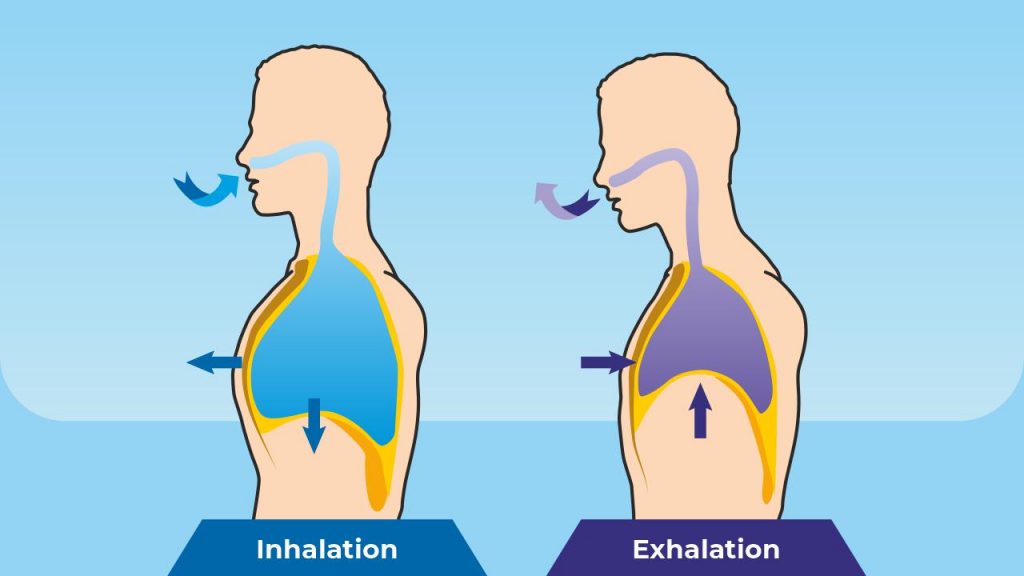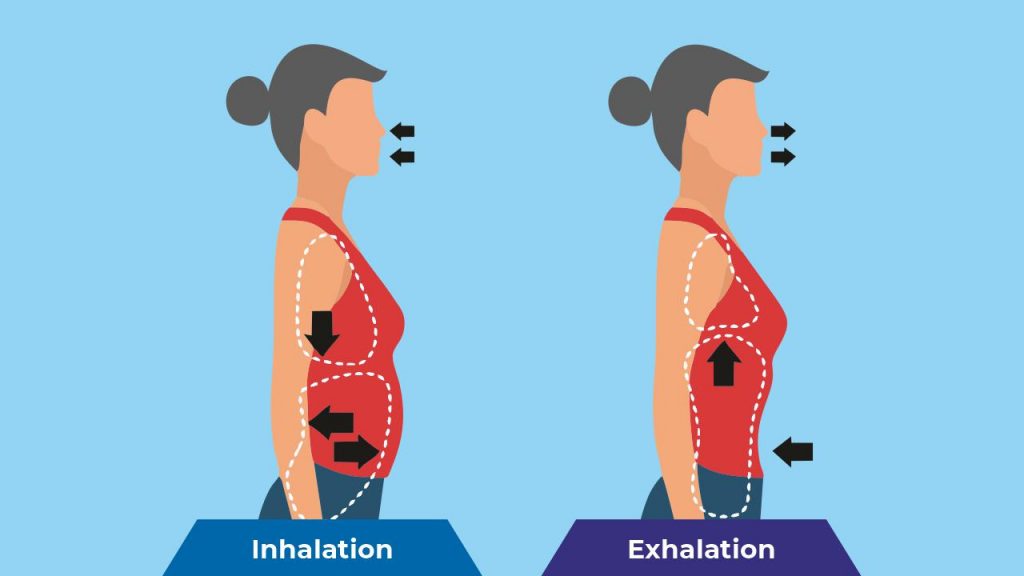
How Should You Breathe While Running

Do you feel breathless within the first 10 minutes of your run? Beginner runners especially may find themselves out of breath quickly, thanks to a higher heart rate and inefficient breathing technique. Breathing comes naturally to everyone, so it is possible to overlook the importance of a sound breathing strategy while running. Therefore, let’s understand how to breathe while running.
Running or jogging is a strenuous activity that can elevate heart rate rapidly in untrained runners or beginners. Your heart responds to the demand for oxygen by your stressed muscles, which would be that of your legs in case of running. This demand for oxygen is felt by your lungs and it dictates how rapidly you breathe. The breathing rate can go up from 15 breaths per minute under normal conditions to up to 50 breaths per minute with high intensity.
When you breathe, you inhale air either through your nose or mouth, which goes down via the trachea to enter the lungs. Here, oxygen from the air is absorbed into the blood, and carbon dioxide (essentially a by-product of energy processes in the muscles) is expelled. Regardless of how simple the process seems, employing the right breathing technique can have a significant influence on your running performance.
Also read: Heart Rate Training: Role and Importance
Breathing techniques
There are essentially two ways you can breathe.
Shallow or chest breathing

Here, only your chest rises and falls as the lower parts of the lungs have not been activated. This leads to poor transfer of oxygen to the blood.
Belly or diaphragmatic breathing

This type of breathing is deeper and results in your stomach expanding. When you breathe in deep, the diaphragm — a muscle that separates your chest from your abdomen — is forced downward. This causes the abdomen to expand and results in a “suction effect” to force air into all parts of the lungs, efficiently transferring sufficient oxygen to the blood.
If you are a runner, focusing on diaphragmatic breathing (or belly breathing) while running might be a good idea. The diaphragm, a large, dome-shaped muscle located at the base of the lungs, helps you breathe most efficiently. Your abdominal muscles help move the diaphragm, which gives you more power to empty your lungs while using less energy
When you breathe correctly with the help of your diaphragm, it
- Strengthens the diaphragm
- Decreases the work of breathing by slowing its rate
- Decreases oxygen demand
- Uses less effort and energy to breathe
Should you breathe through your nose or mouth while running?
If your running intensity is low, the number of breaths you take would be relatively low. In such a case, you may breathe through your nose.
However, as intensity increases and your breathing rate goes up, the need for oxygen rises. The amount of air taken in through the mouth is higher than the nose. In fact, once you start speed training, your heart rate will be close to 95% of its maximum capacity, and breathing through the mouth will then become essential.
Rhythmic breathing allows the diaphragm to expand and contract with the rhythmic stride of your feet during the run, balancing both left and right sides of your body. The recommended ratio is 3:3, i.e., three strides during inhalation and three strides during exhalation. As the breathing rate goes up, you may shift to a 2:2 pattern.
Breathing exercises
There are some breathing exercises that can also help you. Each of these may be practiced for about 5–8 minutes.
1. Diaphragmatic breathing
- Lie down flat on your back
- Concentrate on your belly, paying attention to its rising and falling while breathing
- Place your hands lightly on the belly
- Breathe in through the nose until the belly rises
- Breathe out through the mouth for twice as long
2. Deep breathing
- Sit up straight with relaxed shoulders or lie down
- Inhale slowly and fill the lungs completely
- Exhale slowly and empty the lungs completely
3. Alternate nostril breathing
- Sit up straight with relaxed shoulders on a chair or on the floor
- Close the right nostril with the thumb of one hand
- Breathe in through the left nostril
- Now release the thumb and close the left nostril with the little finger
- Breathe out through the right nostril
- Breathe in through the right nostril
- Close the right nostril with the thumb and release the little finger
- Breathe out through the left nostril
Concentrate on your breath and rhythm. Practicing these techniques can help you breathe efficiently as you hit the road running, improving both your performance and experience of the sport.
For more information on breathing techniques, you can listen to our podcast, Run with Fitpage where Sage Rountree, Ph.D. Talks About Breathing Techniques and Yoga for Runners














